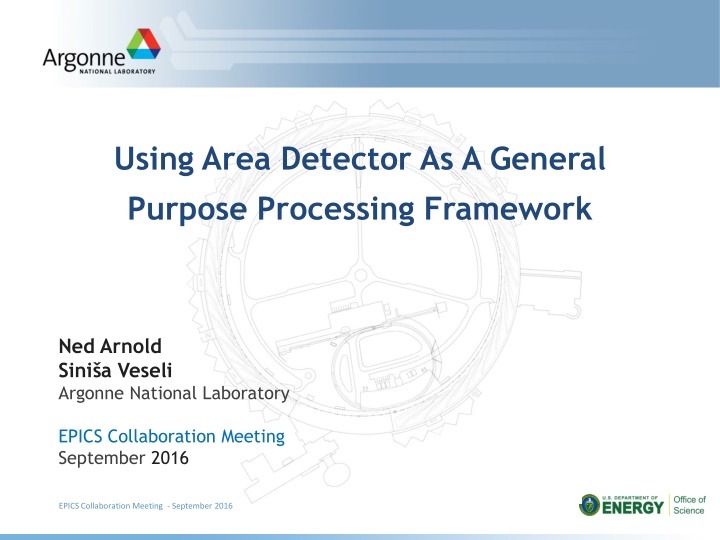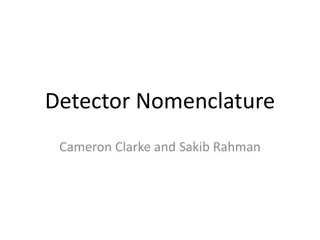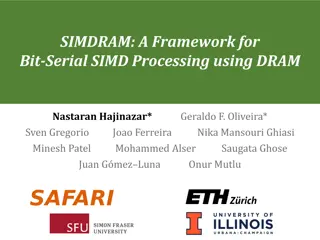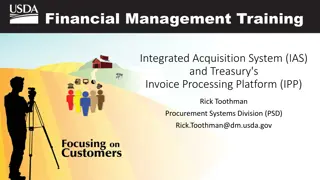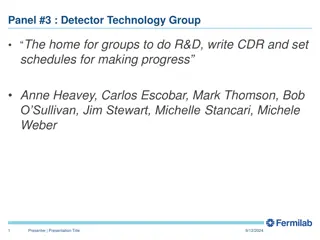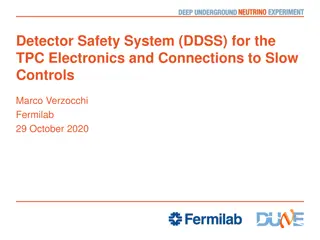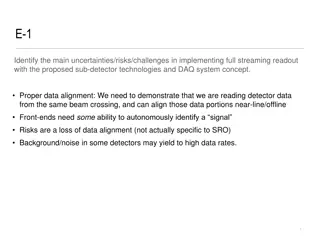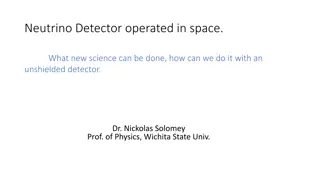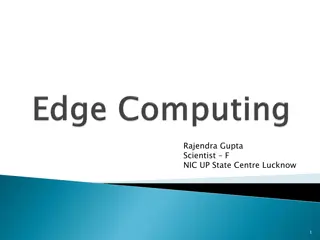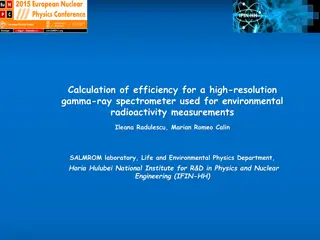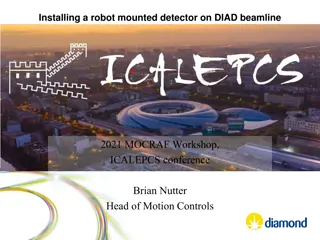Implementing Data Acquisition System Using Area Detector as General Processing Framework
The data acquisition system discussed in this content utilizes the Area Detector framework as a versatile processing tool for handling data from various technical subsystems. It covers aspects such as DAQ architecture, high-speed data transfer methods, time-correlated data collection, and usage of Asyn/AD framework for processing and communication. The system is designed to handle multiple data channels with varying sample rates, support continuous and triggered data acquisition, and manage static parameters efficiently.
Download Presentation

Please find below an Image/Link to download the presentation.
The content on the website is provided AS IS for your information and personal use only. It may not be sold, licensed, or shared on other websites without obtaining consent from the author.If you encounter any issues during the download, it is possible that the publisher has removed the file from their server.
You are allowed to download the files provided on this website for personal or commercial use, subject to the condition that they are used lawfully. All files are the property of their respective owners.
The content on the website is provided AS IS for your information and personal use only. It may not be sold, licensed, or shared on other websites without obtaining consent from the author.
E N D
Presentation Transcript
Using Area Detector As A General Purpose Processing Framework Ned Arnold Sini a Veseli Argonne National Laboratory EPICS Collaboration Meeting September 2016 EPICS Collaboration Meeting - September 2016
Data Acquisition System for APSU MBA Controls DAQ Architecture GigE ~= 100MB/s PCIe 3.0 ~= 985MB/s per lane High Speed Serial ~= 500MB/s (5Gb/s link) BPMs BPMs BPMs RTFB Double Sector Controller Controller Controller Controller Controller Double Sector DAQ IOC DAQ IOC DAQ IOC DAQ IOC Dedicated Subnet(s) RTFB Double Sector Sector Sector Double Sector Double Sector Double Sector Double Sector DAQ IOC RTFB Double RTFB Double RTFB Double Sector BPMs BPMs BPMs Local Storage Handles several technical subsystems Each subsystem has multiple data channels Sample rates vary across subsystems Must provide time- correlated DAQ (3.6 s) Must provide support for continuous and triggered DAQ Must provide support for static parameters, fast and slow data Local Storage Data Collector Service Data Collector Service Data Collector Service Local Storage SR RF DAQ IOC SR RF Cavity Monitoring Injection Kicker DAQ IOC Injection Kicker Kicker Kicker Injection Injection Injection Kicker Message Broker Bunch Diagnostics DAQ IOC Bunch Diagnostics Beam Loss Post Mortem PS SDDS Tools Power Supply Fast Readback DAQ IOC DAQ IOC DAQ IOC Fast Readback DAQ IOC PS Power Supply DAQ Interface DAQ Interface DAQ Interface DAQ Interface DAQ Interface Power Supply Fast Readback Fast Readback Fast Readback DAQ IOC PS Power Supply Power Supply Power Supply Power Supply Power Supply Power Supply Power Supply PS PS Octave Analysis Program Lost Injection Shot PS Octave Analysis Program Lost Injection Shot Injection DAQ IOC DAQ IOC DAQ IOC Injection Injection EPICS Collaboration Meeting - September 2016 2
Typical DAQ IOC DAQ Data Based on Asyn/AD Framework (encapsulated NDArray) Varies by technical system Prototyped several options: Custom TCP EPICS V4 PVA AMQP (QPID) Varies by technical system: MRF Event Receiver APS Event Receiver NTP/PTP EPICS Collaboration Meeting - September 2016 3 3
Asyn/AD Framework Usage DAQ System uses Asyn/AD Framework to collect and process data from technical subsystems - Driver packs channel data into ND Arrays, and passes it to real-time processing plugins - ND Array attributes describe the content (i.e., what data is in ND Array, how is it packed) Communication plugin streams ND Arrays to remote Data Collector service where it is unpacked, stored, and (possibly) forwarded to Message Broker DAQ Data Packet - List of Parameters (NDArray Attributes) (including list of channels that follow) Block of Time-series Data Timestamp Channel 1 Channel 2 Channel 3 Channel 4 Channel N . . . . . . . . . . . . . . . . . . EPICS Collaboration Meeting - September 2016 Since absolute timestamps are recorded, plotting channels from different files/systems against Timestamp provides immediate time-correlated plots . EPICS Collaboration Meeting - September 2016 4
Challenges How do we pack data? - ND Array was designed for homogeneous data; DAQ must handle multiple data types - Timestamps are doubles, channel data may not be - DAQ channels may have different data types How do we handle runtime configuration changes? - Must be able to turn on/off different channels without restarting various system components - Configuration changes result in ND Array packing scheme changes How do we provide DAQ users with easy access to individual channel data? - Cannot be done without custom clients that know how ND Array was packed How do we handle slow vs fast data? - Must avoid significant overhead in memory/network bandwidth How do we efficiently access/process channel data in real-time DAQ processing plugins? - Unpacking ND Array data in plugins themselves is very inefficient Possible Solution Modify AD framework to pass DAQ structures through plugins; those could then be easily exposed as EPICS v4 structures over PV Access protocol EPICS Collaboration Meeting - September 2016 5
Extended AD Core Prototype Prototype Goals: 1) Minimal modification of AD core code that allows us to pass arbitrary data through processing plugins (without having to pack/unpack ND arrays in plugins themselves) 2) Backwards compatibility: no existing AD plugins need to change Ability to retrieve data from IOC via standard PVA APIs and tools like pvget Strategy: use NDArray/NDArrayPool as base classes for extending the AD Core functionality AD Core modifications: 6 lines of code in NDArray.h and about 25 lines of code in NDArrayPool.cpp: 3) - New NDArrayPool class methods for management of extended ND arrays - Modifications to keep track of ELL node offset Custom DAQ Code: - RtfbNDArray (derived from NDArray, incorporates custom v4 structure) and RtfbNDArrayPool classes (derived from NDArrayPool, manages RtfbNDArrays) - Driver code uses custom pool and manipulates RtfbNDArray - RtfbNDPluginPva exposes RtfbNDArray via PV Access channel (plugin uses dynamic cast to convert NDArray pointer to RtfbNDArray pointer) EPICS Collaboration Meeting - September 2016 6
Extended AD Core Prototype Advantages: - Approach is completely backwards compatible (no need to change existing plugins) - Requires minimal modifications to AD Core - No loss in performance due to packing/unpacking ND Arrays in plugins - Custom plugins can expose data as v4 structures easily; those can be accessed using standard client tools: $ pvget rtfb_ext_ndarray rtfb_ext_ndarray structure uint ArrayId 0 double[] TimeStamp [] float[] PosX_0 [] float[] PosY_0 [] float[] PosX_1 [] float[] PosY_1 [] Drawbacks: - Custom plugins that use classes derived from NDArray must downcast (performance hit) - Design not quite suitable for a general purpose processing framework - Better solution would require AD Core refactoring/redesign, and would not be backwards compatible EPICS Collaboration Meeting - September 2016 7
Discussion Would it be acceptable to modify AD Core with minimal changes that would support APSU DAQ use cases? Is anyone else interested in AD Core being converted to (or used as a base for) a more general purpose processing framework? EPICS Collaboration Meeting - September 2016 8
